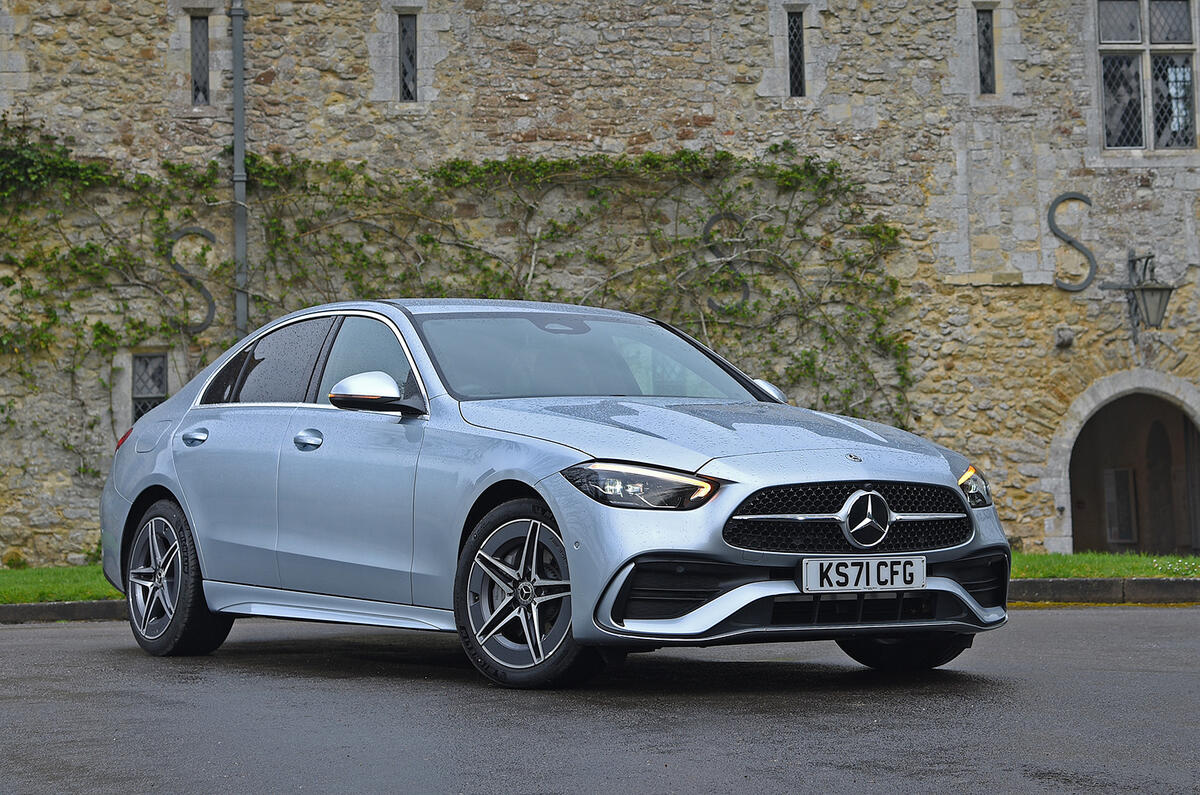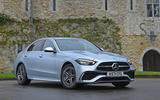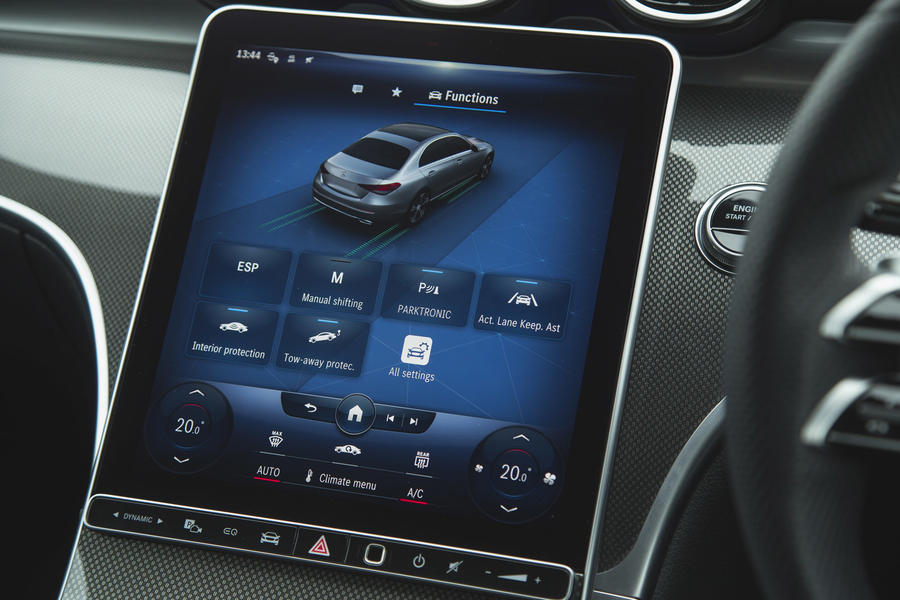The C-Class isn’t quite a natural sports saloon and it won’t be a default choice for interested drivers, but it handles well and, in slippery and testing conditions, it showed close enough body control and sufficiently well-balanced grip levels to carry plenty of speed, to maintain an interested driving style and to contain any kerb-weight-related negative impacts.
The car changes direction progressively rather than keenly and hints at handling adjustability in tighter bends without fully following through with much rear-driven handling flair.
But it generates more than enough grip, handling precision and dynamic composure to cover ground quickly when called on to do so, and is easy to drive briskly – which is probably exactly the effect its maker intended.
The chassis tune feels slightly comfort-biased at all times, with plenty of suppleness, but it stops well short of floating or wallowing on cross-country roads, and maintains good pitch control. Some body roll presents when cornering hard, but not enough to affect the steady-state grip levels, or to make the stability control electronics intervene intrusively. At the limit of grip, the front axle washes wide first, but with the weight of the batteries over the rear one, that’s probably as you would want it.
Vertical body control at speed over uneven roads is good – absorptive but hard to fluster. The steering is quite light and feels filtered, and it lacks a little in helpful definition of feedback, just like the brake pedal tuning.
Comfort and isolation
Generally the C-Class is well mannered car at cruise. In comparable test conditions, it recorded better results at both 30mph and 50mph than the DS 9 E-Tense PHEV (itself a subjectively pleasingly refined car) with its engine shut down and both wind and road noise quite well contained.











































